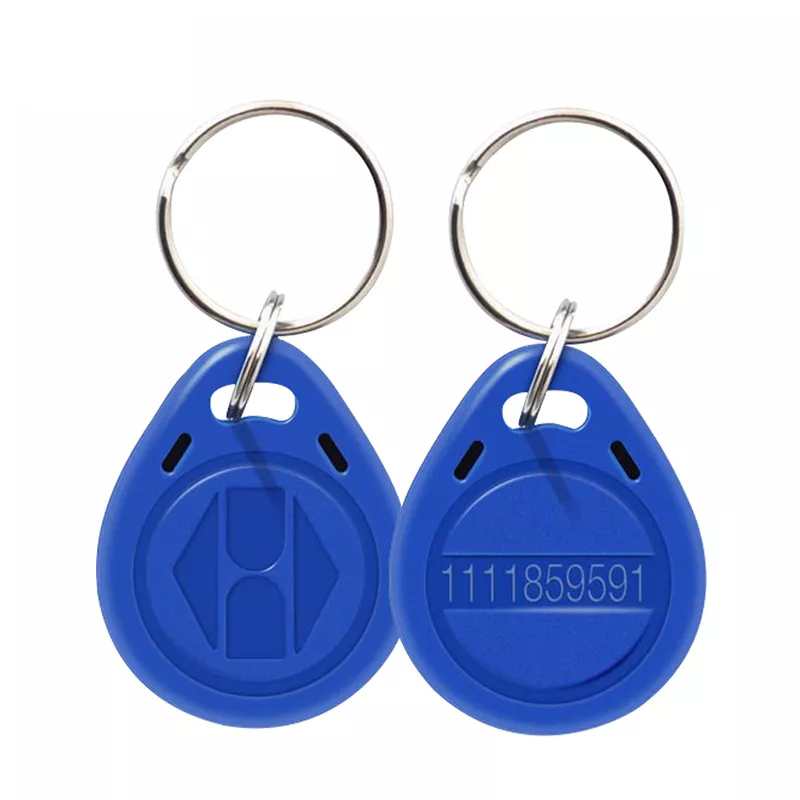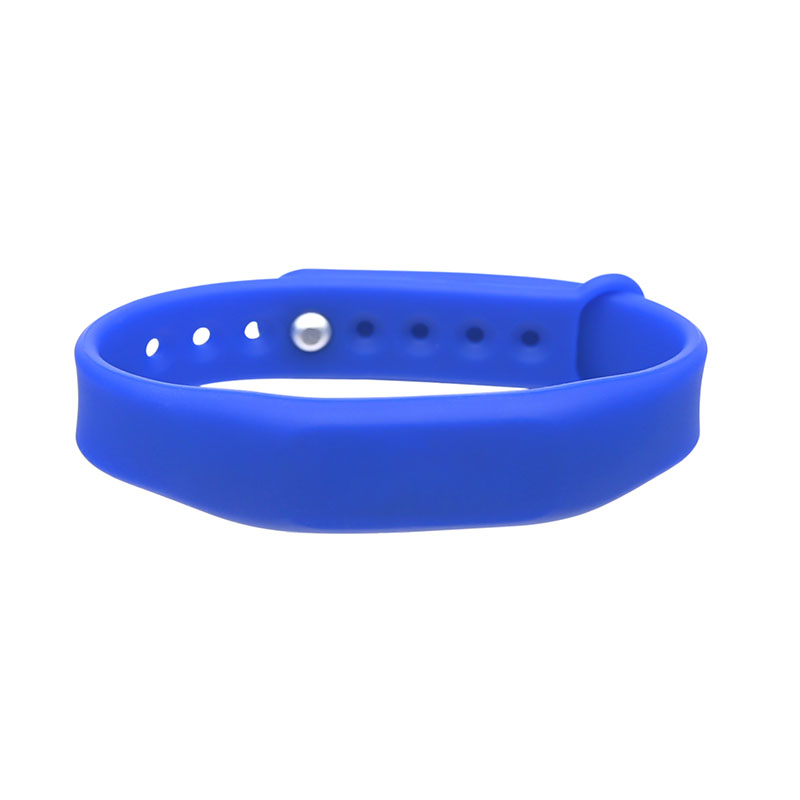In the current context of increasingly popular medical information technology, how to achieve accurate, efficient and safe patient management has become an important issue for medical institutions. rfid (Radio Frequency Identification) technology is gradually being widely used in various medical scenarios by virtue of its non-contact identification, high-speed reading and powerful data integration capabilities. Among them, rfid wristbands, as a bridge between patients and the hospital information system, are changing the traditional way of patient management with its practicality and technical advantages.
This paper will comprehensively analyze the use of rfid wristbands for patients with a variety of benefits, covering identification, security, process optimization, medical quality improvement and other key content, aimed at the implementation of intelligent transformation of hospitals to provide a reliable technical and management basis.
1.Overview of rfid technology
rfid is an automated technology that uses radio frequency signals for data transmission and identification, and the typical structure includes tags (Tag), readers (Reader) and data management systems. Its advantages are:
Information can be read without line-of-sight contact;
Can be read on the move;
Stores a large amount of information and can be written repeatedly;
Security mechanisms such as anti-counterfeiting and encryption.
2.Composition of rfid wristband
A complete rfid system mainly consists of the following three core components:
rfid tag: embedded inside the wristband, storing the patient's unique identity code and related information.
rfid reader (Reader): installed in the entrance of each department, nursing station, nurse handheld devices, used to read the tag information.
Backend management system (Backend): docked with HIS (Hospital Information System), EMR (Electronic Medical Record System), LIS (Laboratory Information System), etc. to realize real-time information interaction.
With the following features:
Waterproof, anti-bacteria, soft, suitable for long-term wear;
Unique code, bound to patient's file;
Color can distinguish risk level or ward type.

1.Accurately identify patients and reduce medical errors
Patient identification error is one of the main hazards of global medical safety. rfid wristbands read patient information through wireless means to ensure that healthcare workers in the implementation of infusion, injection, surgery, delivery and other operations before checking the error-free, significantly reducing human error.
2. Improve medication safety and treatment accuracy
Through the linkage of rfid wristbands with the medical prescription system, nurses can scan the wristbands for information verification before administering medication, and the system automatically determines whether the medication matches the patient and whether there are contraindications or allergies, effectively avoiding the incidents of wrong medication and heavy medication.
3. Rapid response to emergency scenarios, saving golden time
In ICU, emergency or emergencies, medical staff can scan the rfid wristband to immediately obtain the patient's medical history, allergy information, surgical records, which provides a key basis for the development of first aid programs and saves resuscitation time.
4. Realize behavioral positioning and risk control
rfid system can track the patient's activity trajectory in the hospital, especially for psychiatry, geriatrics and other high-risk areas. If the patient leaves the safe area, the system automatically alarms to prevent loss, fall, accidentally enter the forbidden area and other events.
5. Protect patients' privacy
Unlike barcode or paper tags, rfid information is in an encrypted format so that only authorized devices and systems can read the relevant information, preventing privacy leakage and meeting the requirements of regulations such as the Personal Information Protection Act.
6. Improve the experience of medical consultation and enhance satisfaction
Patients do not need to repeatedly present their medical records or dictate their names in the process of hospitalization, examination, testing, medicine collection, etc. The system automatically recognizes their identity and guides the process, which greatly improves the efficiency and comfort of medical treatment.
The application value of rfid wristbands in different departments
1.Operating room:
error prevention, control of consumables
Verify the patient's identity and surgical site;
Manage the use of surgical instruments and disposable consumables;
Realize the digital closed loop of the whole process of preoperative-operative-postoperative.
2.Maternal and Child Unit:
Ensure mother and child matching
Newborns and mothers wear matching rfid wristbands to ensure zero error in breastfeeding, nursing and discharge;
Automatic identification of entering and leaving the ward prevents newborns from being mistakenly taken away.
3.Psychiatry:
Guaranteeing Patient Safety
Tracking patient positioning to prevent leaving the ward or injurious behavior;
Medication verification system to prevent missed or mistaken doses;
Data analysis of patient behavioral patterns to assist psychological intervention.
4.Rehabilitation and long-term care:
assisting recovery monitoring
Linkage of wearable devices to collect sign data;
Assisting recovery program progress tracking;
Supporting remote follow-up management.
5.Laboratory and Imaging:
Seamless Connection
rfid wristbands can be seamlessly connected with LIS (Laboratory Information System) and PACS (Picture Archiving and Communication System);
Automatic uploading of patient examination results, the system automatically reminds the diagnosis.
How rfid wristbands Empower Hospital Management
1. Automatic data collection to improve efficiency
rfid system can automatically record the patient's point-in-time data, movement trajectory, diagnosis and treatment operation records, reduce manual entry and errors, and improve the efficiency and quality of care.
2. Data analysis to support hospital decision-making
Through the statistics of patient flow, activity path, diagnosis and treatment time and other data, the management can accurately grasp the use of resources, optimize the scheduling arrangements and distribution of wards, reduce operating costs.
3. Traceability and Evidence Preservation for Medical Disputes
All the records of medical advice execution, operation information and time nodes can be traced back to provide an objective evidence base for dispute handling and medical incident investigation.
4. Reduce the waste of consumables and cost control
rfid is not only used for patients, but also can be used to track the use of medical supplies and medicines, realize dynamic management of the hospital's supplies, and reduce inventory backlog and expiration waste.
5. Enhance patient satisfaction and brand image
Modern hospitals compete not only in technology but also in service. The use of rfid wristbands can significantly enhance the patient experience, so that it feels the temperature of technology, thus increasing the trust and loyalty to the hospital.

Deployment of rfid wristband system challenges and countermeasures
Cost issues
Challenge: High initial investment in equipment procurement, system construction, and manpower training.
Countermeasures:
Prioritize piloting in high-risk departments such as operating rooms and ICUs;
Use sterilizable reusable wristbands;
Utilizing government smart healthcare subsidy programs.
Privacy Protection Issues
Challenge: Patient identity information is at risk of being illegally read.
Countermeasure:
Encrypted transmission of all tag data;
Set up hierarchical control of access rights;
Regular security audits and hacker simulation tests.
High complexity of system integration
Challenge: Difficulty in interfacing with existing HIS, EMR and other systems in hospitals.
Countermeasure:
Adopt standardized interface protocols (e.g. FHIR, HL7);
Introduce professional rfid integrators for unified deployment;
Strengthen the linkage and synergy between the information department and the front-line departments.
Future Trends and Development Prospects
Integration of IoT and AI
rfid will be used with mattress sensors, health monitoring equipment, intelligent lighting, etc. to form intelligent wards, with the help of AI algorithms to predict patient behavioral trends and health risks, and to realize pre-warning.
Cloud platform and remote management
After rfid data is uploaded to the cloud platform, doctors can access patient health information off-site, providing support for remote consultation and home rehabilitation.
Extension from in-hospital to out-of-hospital
In the future, rfid wristbands can be combined with health insurance, smart cities and other platforms to extend the functions of post-discharge follow-up reminders, chronic disease management and remote health intervention.
Highly personalized application
Through data mining and user profiling, we can create a customized medical experience for each patient, such as automatically recommending nutritional recipes and rehabilitation paths.
Sensorless identification and smart wearable integration
With the miniaturization of rfid technology and the trend of non-sensory, the future rfid function can be embedded in the daily wearable devices to achieve non-sensory information collection and dynamic medical intervention.
Conclusion: rfid wristbands are the key starting point of smart healthcare
rfid wristband is not only a technical tool, but also a patient-centered, data-driven smart healthcare solution. It has shown significant advantages in improving identification accuracy, ensuring medication safety, optimizing medical processes, and enhancing service experience. With policy support, technology maturity and cost reduction continue to promote, rfid wristbands will be popularized and applied in more medical institutions, to build a “safe, intelligent, efficient, people-oriented” modern healthcare system to play a core role.
Hospitals wishing to take advantage of the new wave of digitization, rfid wristbands is undoubtedly worth focusing on one of the direction of investment and continuous exploration.
Why choose us?
Established in 2010 – Over a decade of rfid experience
Full customization – rfid cards, wristbands, key fobs, and smart devices
High quality – ISO-compliant materials (ISO 14443, ISO 15693)
Secure solutions – Encrypted protocols and data protection
Flexible scalability – From startups to enterprise-level projects
Contact us today to learn how we can help streamline your inventory management with reliable, smart rfid solutions.






